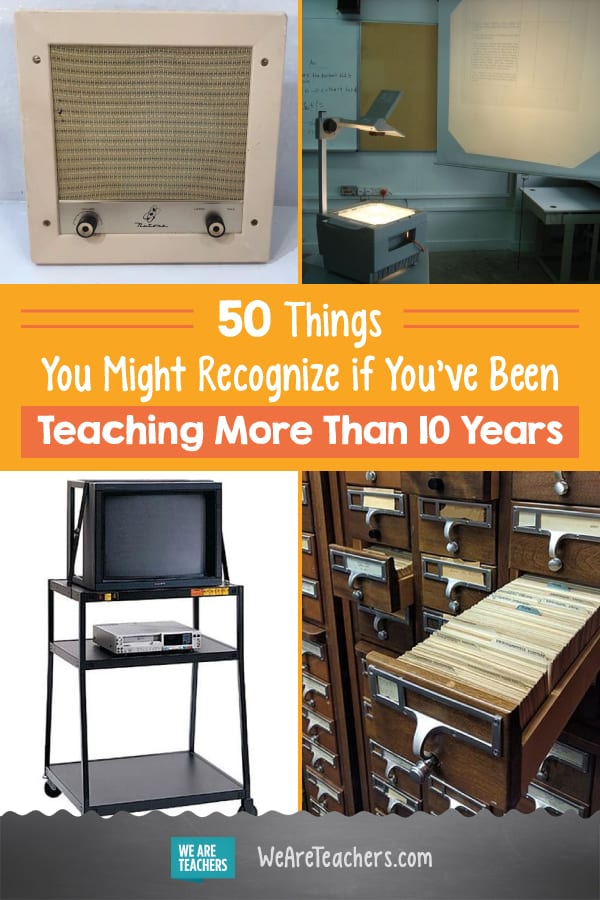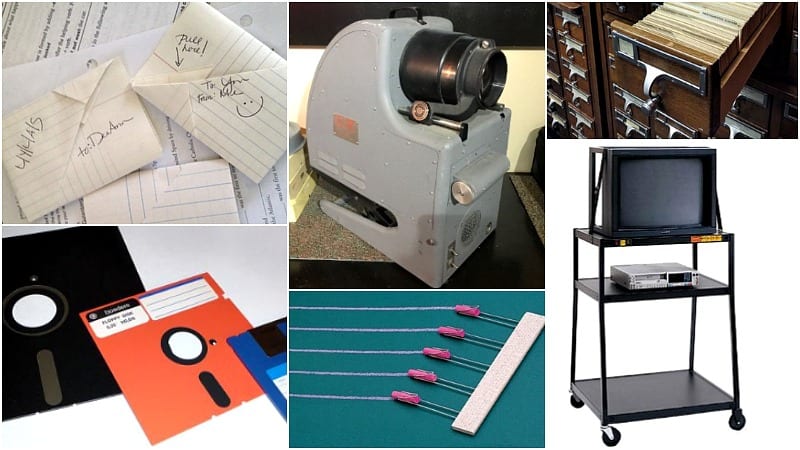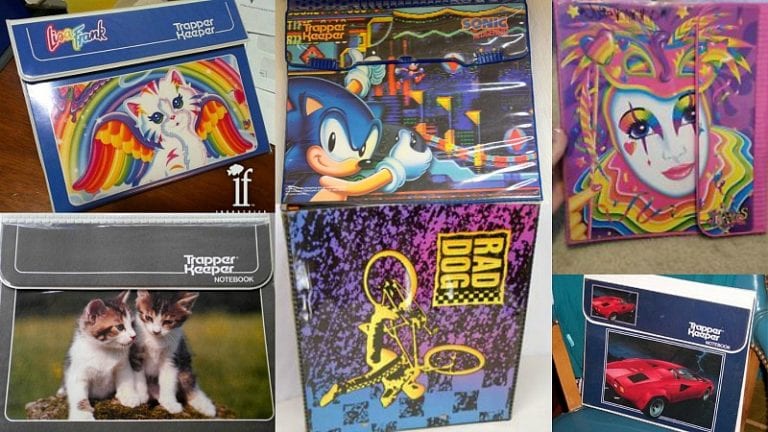Teaching beyond 10 years should be a badge of honor. You’ve seen a lot (some things you wish you could unsee), and you’ve watched things evolve and change along the way.
Now if you’ve been teaching for 15, 20, or 30+ years, that’s an even bigger accomplishment—major kudos to you. So to celebrate some of those familiar, amazing, and old-school moments of being a teacher, we asked our Facebook fans to share with us some of their best Remember when … ? items and practices.
Which ones do you recognize?
1. So. Much. Chalk Dust.
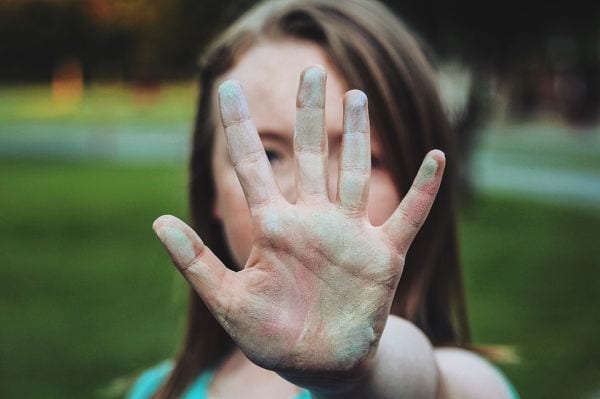
Before whiteboards, we had blackboards and chalk—and all the chalk dust that came with it. And, of course, on the days when you’d lean against the chalk tray while you lectured, you’d end up with a chalk line or two in a rather … conspicuous place.
2. The Joy of Colored Chalk
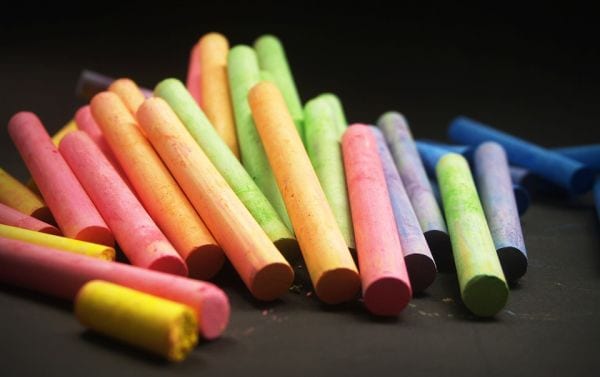
Most schools supplied teachers with an almost unlimited supply of white chalk, but colored chalk was harder to get your hands on—and that much more exciting when you did.
3. Clapping the Erasers
Every few days, chalkboard erasers had to be “clapped” to get rid of the dust. This was a coveted classroom job, as students usually were sent outside or at least got to lean out the window in order to do it.
4. Chalk Holders

The coolest teachers bought themselves chalk holders to protect their hands from the dry, dry, DRY feeling of holding chalk all day long.
5. The Chalk Liner Tool
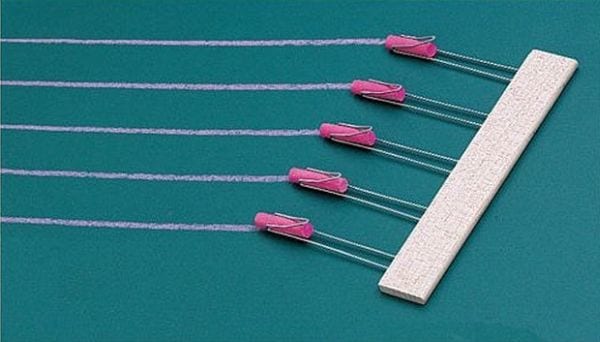
This nifty tool let you draw parallel lines on the chalkboard and was great for teaching music or handwriting. Way better than using a yardstick to draw the chalk lines by hand.
6. Old-School Overhead Projectors
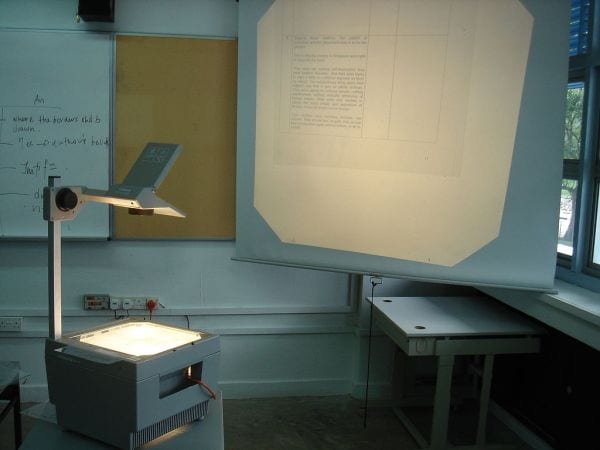
Source: Mailer_diablo via Wikipedia
The original overhead projectors used plastic sheets often referred to as “transparencies.” The light bulb was toasty warm, which was great on cold days but also had a nasty habit of melting anything left underneath it for too long (including the occasional transparency sheet).
7. Vis-a-Vis Marker Fingers
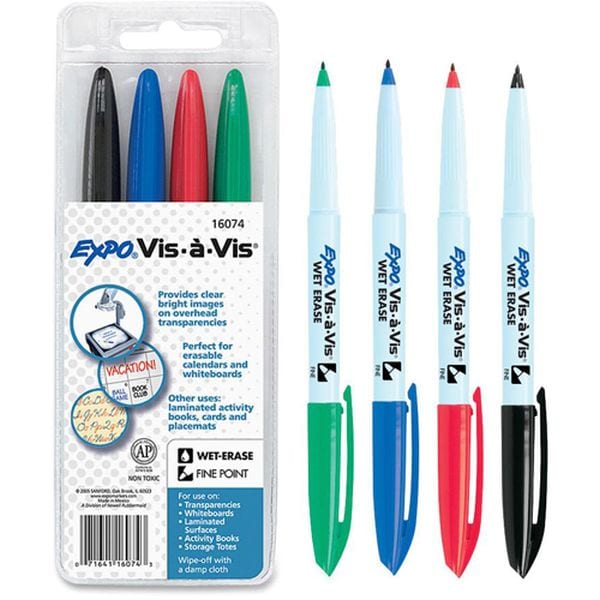
To write on overhead transparencies, you used wet-erase Vis-a-Vis markers. These could be cleaned off with a wet sponge or paper towel, but somehow you never had one handy, so you spit on your finger and used that instead. And once that ink was on your fingers, it NEVER wanted to wash off.
[contextly_auto_sidebar]
8. Opaque Projectors
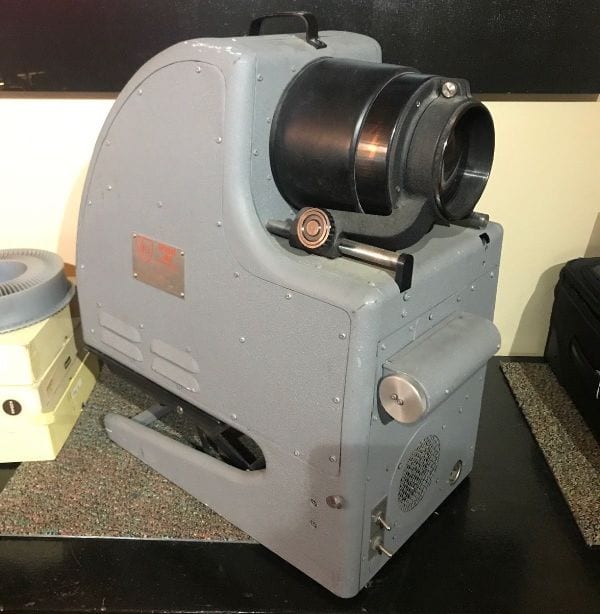
If you wanted to project a page from a book or something similar, you could use an opaque projector. This also had a nasty habit of burning anything left on them for too long.
9. Carousel Slide Projectors
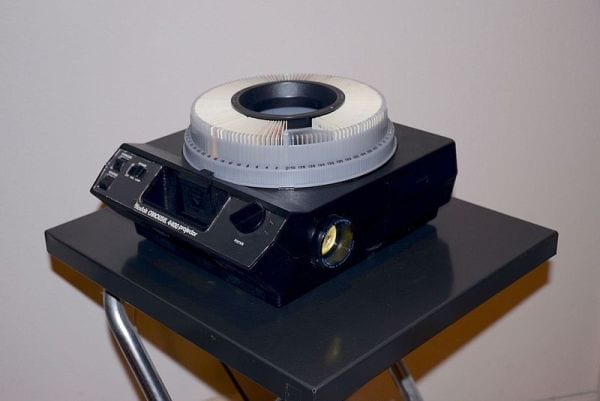
Source: Steve Morgan via Wikipedia
Once upon a time, if you wanted to show photos to your class, you had them turned into slides and then showed them using one of these projectors. And somehow, they always went in upside-down or backward—or both.
10. Filmstrip Projectors
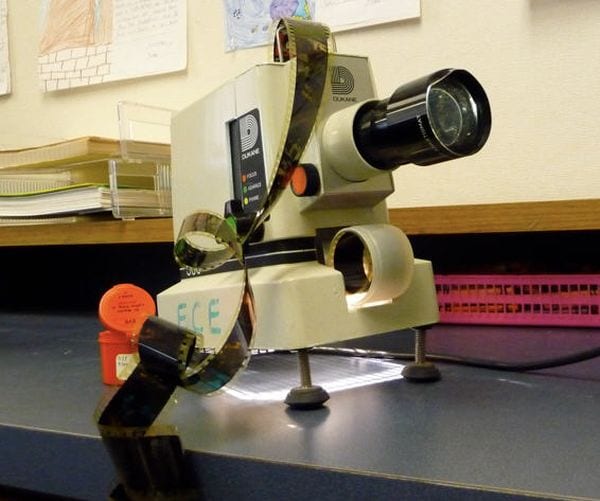
Filmstrips displayed a series of still images and were usually accompanied by a narrative that had been recorded on vinyl or a cassette tape, which dinged to tell you when to advance the frame (a common classroom job). Later models automatically advanced the film along with the tape.
11. Reel-to-Reel Projectors
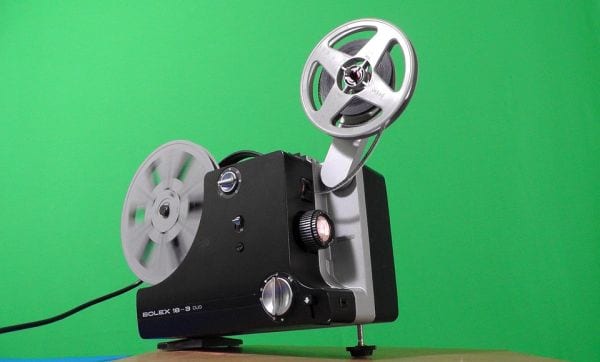
Most schools had a couple of these available for teachers to use, and you could order films from a central repository in your county or district. Feeding the film through these took a bit of skill, and occasionally the film would snap apart in the middle of the movie, prompting a loud round of groans from the class.
12. The TV/VCR Cart
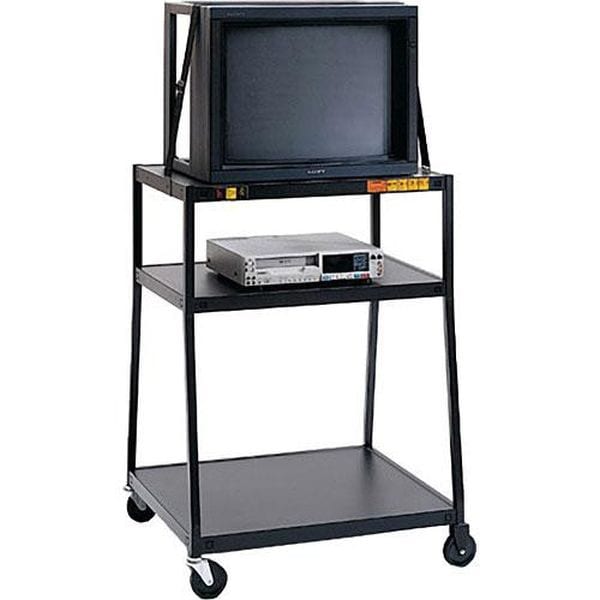
Like movie projectors, most schools only owned a couple of TVs back in the 1980s. These were checked out by teachers and rolled around to different classrooms, and it was always an exciting sight for kids to see one of arrive at the door.
13. Laser Disc Players
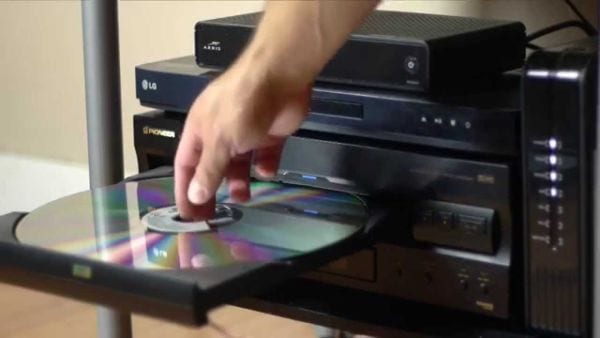
Those big TVs first came with a VCR, then with a DVD player. But some schools laid out big bucks for the very short-lived laser disc technology, which gained popularity during that in-between time. They looked a lot like compact discs but were much larger. This technology was quickly made obsolete by DVDs.
14. Record Players
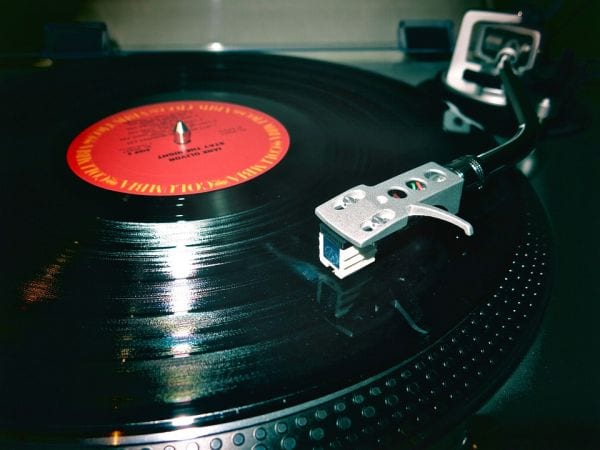
There were all sorts of tricks for using record players, like laying a penny on the needle arm to keep the records from skipping, or counting the rings to find the right song or lesson to play for your class. Teachers knew them all.
15. Cassette Tape Recorders
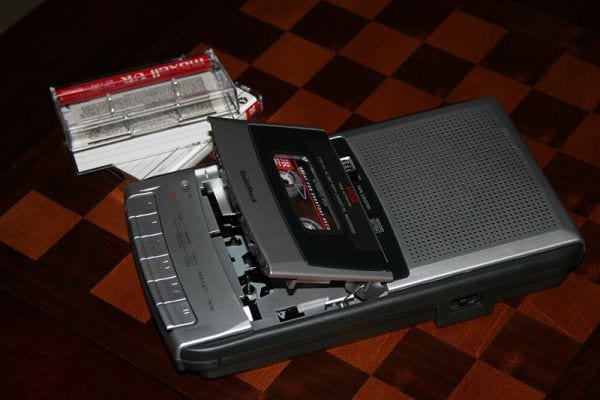
Source: J.smith via Wikipedia
Records were replaced by cassette tapes, which also gave us the capability to record and play back audio. Of course, this came with the inherent risk of taping over whatever was already on the cassette, unless you remembered to pop that little tab first. Everybody forgot that at least once, though.
16. The Cassette Tape Pencil Trick
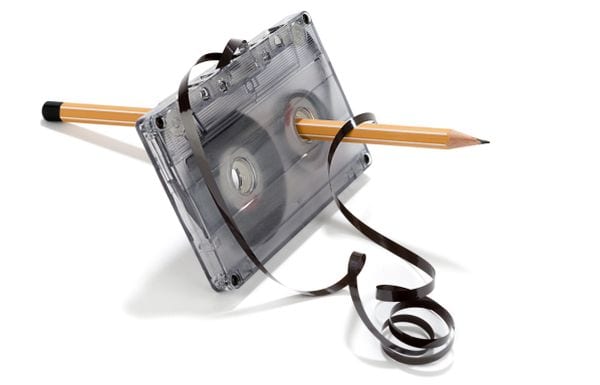
Source: Adobe Stock Photos
Sometimes, the tape recorder “ate” the tape. After oh-so gently detangling it, you could use a pencil to wind it back into place and hope that it hadn’t been damaged. It worked surprisingly often, though.
17. The Messy Mimeograph Machine
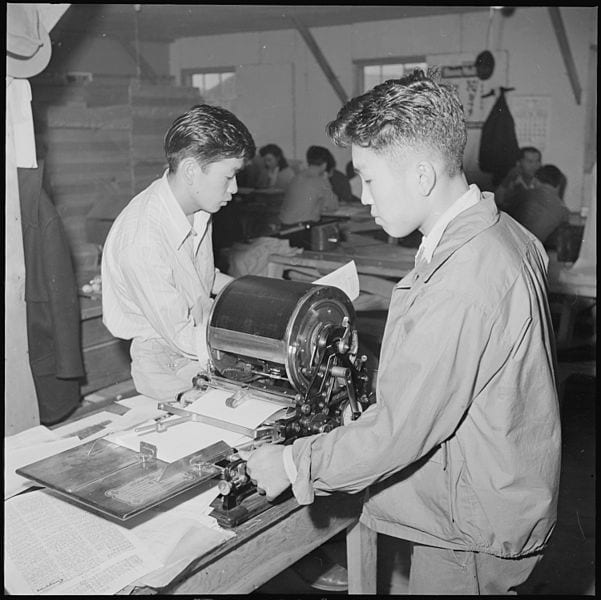
Long before photocopies, mimeographs were the first mass-duplicating technology in most schools. They worked by forcing ink through a stencil onto paper. Teachers had to create the stencils using a sharp pen or typewriter, then ink the machine and crank the copies by hand—usually very messy hands by the time you were done.
18. The Ditto Machine (Spirit Duplicators)
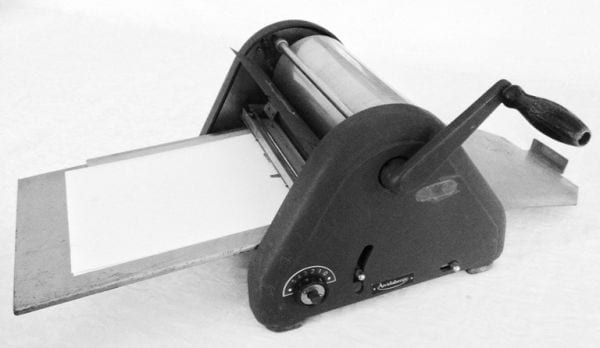
Source: Kimsaka via Wikipedia
Spirit duplicators came next. Teachers created a “spirit master” sheet, which transferred a waxy ink (often purple—hence the nickname “Purple Durple”) to a limited number of copies, often called “dittos.” Ditto machine ink had a faint sweet smell, and students loved to sniff the freshly printed sheets as they were handed out.
19. Carbon Copies and Correction Fluid
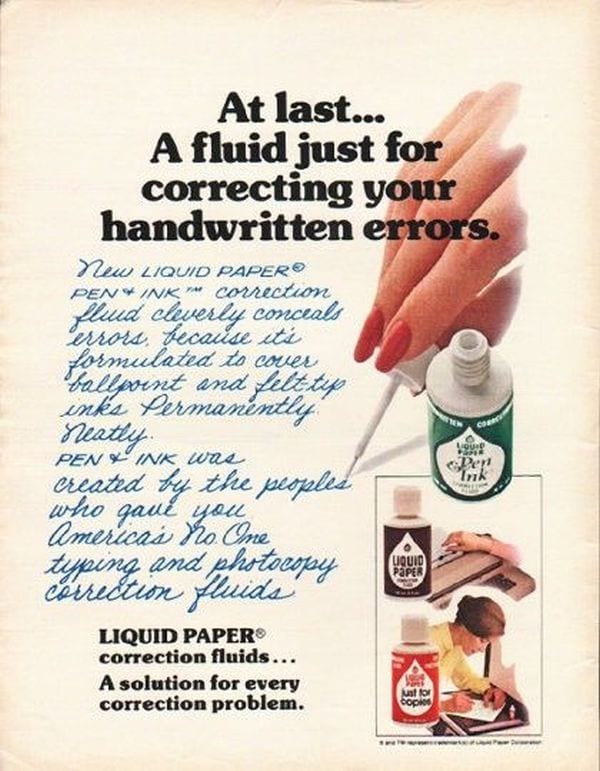
Some forms (like early IEPs) came with carbons to make several copies at once. If you made an error on the original top sheet, you could correct it with white correction fluid. But the copies underneath were usually a variety of other colors, like yellow, pink, or blue, meaning you needed a whole collection of correction fluid hues.
20. Slide Rules
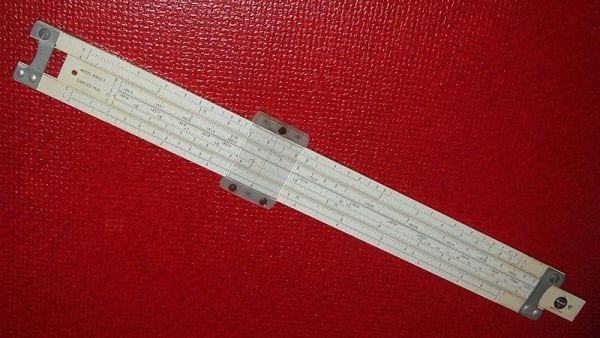
Source: Arnold Reinhold via Wikipedia
Before calculators, slide rules did complicated math for you, including division and multiplication. It was also used for exponents, roots, logarithms, and more. And it didn’t need batteries.
21. Typewriters and Typing Class
![]()
Typewriters weren’t just for school secretaries. Many schools offered typing classes, with entire rooms full of kids learning to use the very noisy machines. Unlike today, this skill usually wasn’t taught until junior high or high school, and girls were more likely than boys to take the class.
22. Word Processors
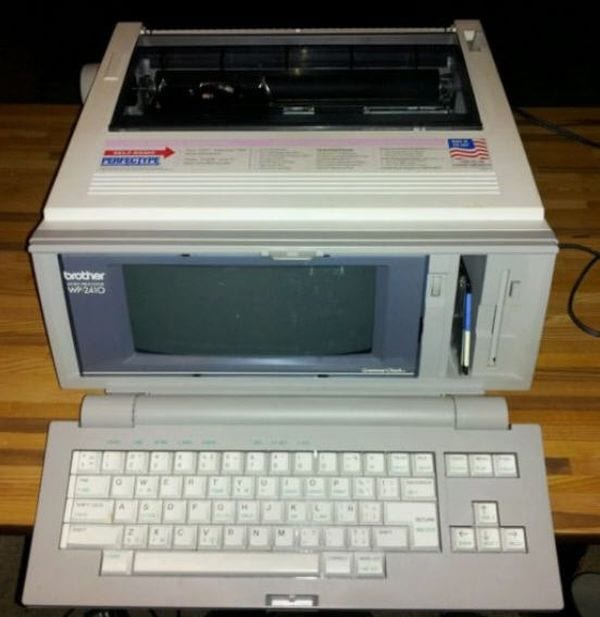
For a brief moment in time, word processors were high technology. They had a small screen so you could see and edit what you were writing before you printed it, which was much better than a typewriter. But in just a few years, personal computers were the same price and offered much more versatility.
23. The Apple IIe and Other Early Personal Computers
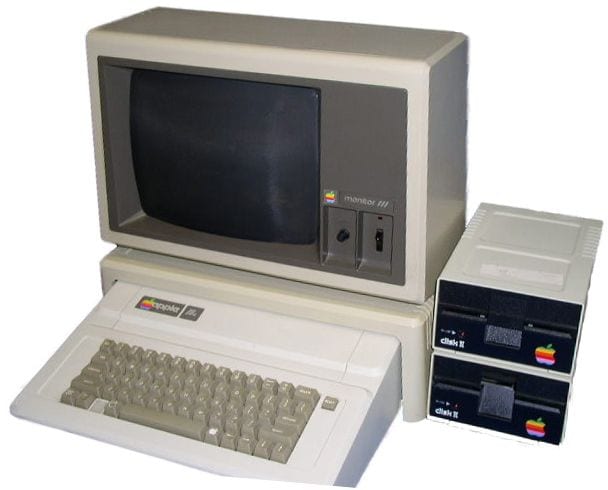
Early computers seemed like marvels, but mostly what people seem to remember today is playing Oregon Trail and Lemonade Stand, and maybe a typing program or two.
24. Floppy Disks
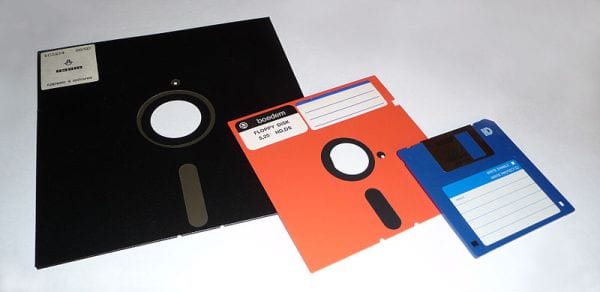
Source: George Chermilevsky via Wikipedia
Floppy disks went through changes but were around for years. The earliest 5¼-inch disks were actually floppy, but over time disks became smaller and were encased in rigid plastic. Losing one of these was always terrifying because there was no such thing as backing up to the cloud in those days.
25. Dot Matrix Printers
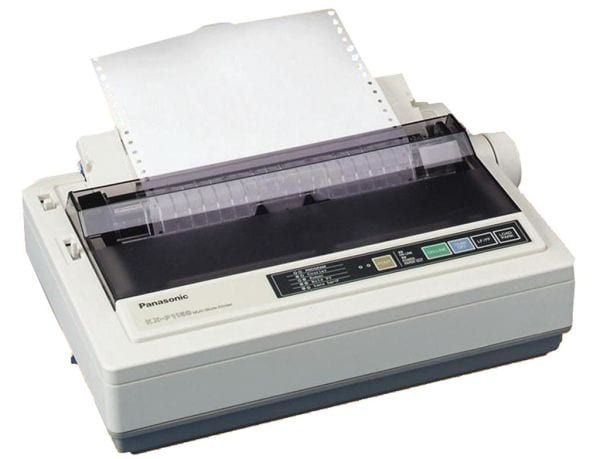
Source: Sennur Dogan via Wikimedia Commons
Early printers fed paper continuously and printed everything with a series of dots. Savvy teachers could make banners for their classrooms, though if you didn’t reinforce the perforated seams with tape, they had a tendency to fall apart at inconvenient times.
26. Classroom Intercoms
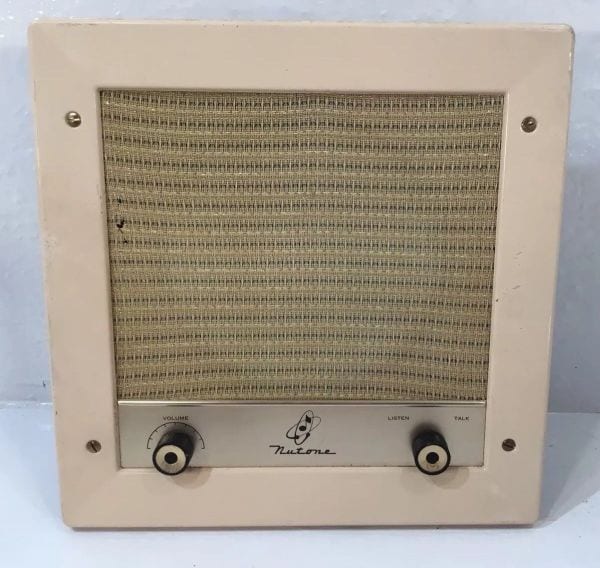
Before cell phones, communicating with the main office involved either sending a student with a note or (if you were lucky) using the wall-mounted intercom.
27. Limited Telephone Access
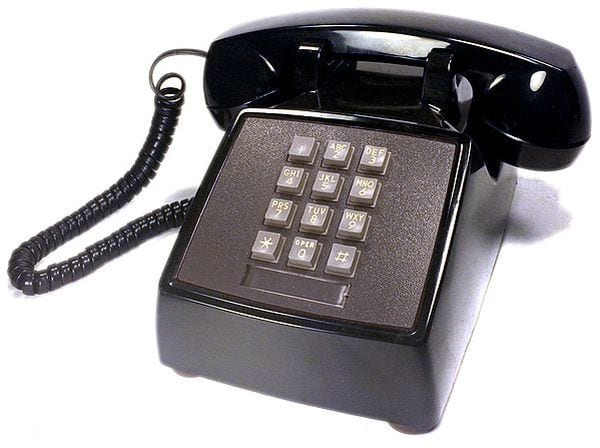
Source: Jonathon Mauer via Wikipedia
With no email and no cell phones, contacting a parent usually meant waiting your turn to use the telephone in the main office or the staff room.
28. Encyclopedias
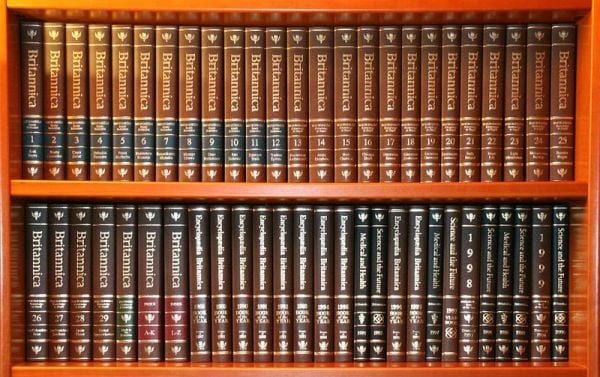
Source: Cornischong via Wikimedia Commons
Back in the dark ages, encyclopedias provided general information on most topics. Schools usually had a set or two in their library for all students to share.
29. Microfilm and Microfiche
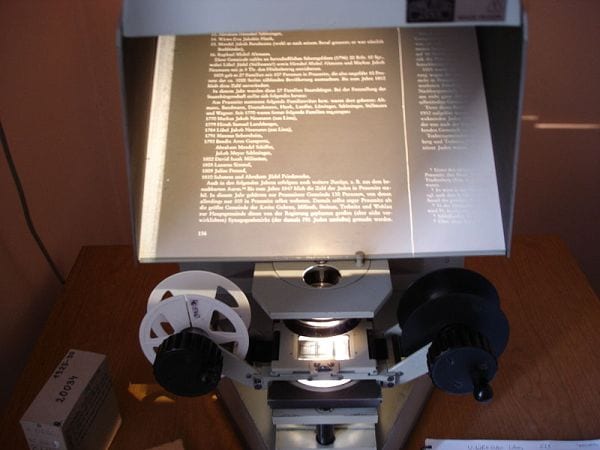
Source: David Lisbona via Wikimedia Commons
If you wanted to look up an old newspaper or magazine article, you might have to use the library’s microfiche machine, which stored images on small film reels. Student records were sometimes stored like this, too.
30. Card Catalogs and the Dewey Decimal System
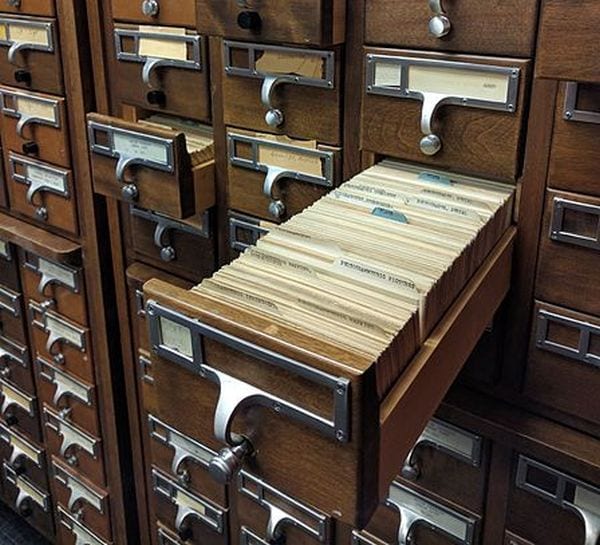
When you wanted to know if the library had any books on Alexander Hamilton, you’d head to the card catalog. Nonfiction books were organized by the Dewey Decimal System, a series of numbers that actually made it quite easy to find the book you were looking for in the stacks. Kids were often required to memorize it.
31. Library Book Cards
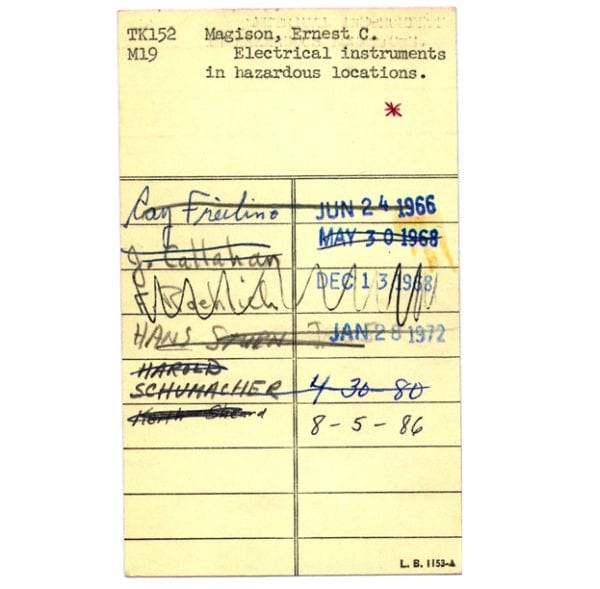
No scanners or bar codes here! A card was tucked into each library book, and students wrote their name (and often class or teacher) on the card. A due date was stamped or written on the card and kept by the library.
32. Attendance Registers
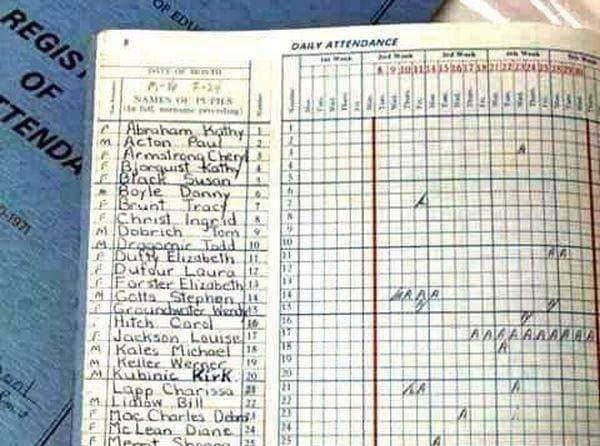
Source: Celia Weir via Pinterest
Attendance registers were the bane of many teachers’ lives. They had to be kept perfectly and reported to the main office on a regular basis. One teacher even remembers not being able to receive her last paycheck at the end of the year until she turned hers in.
33. Grade Books
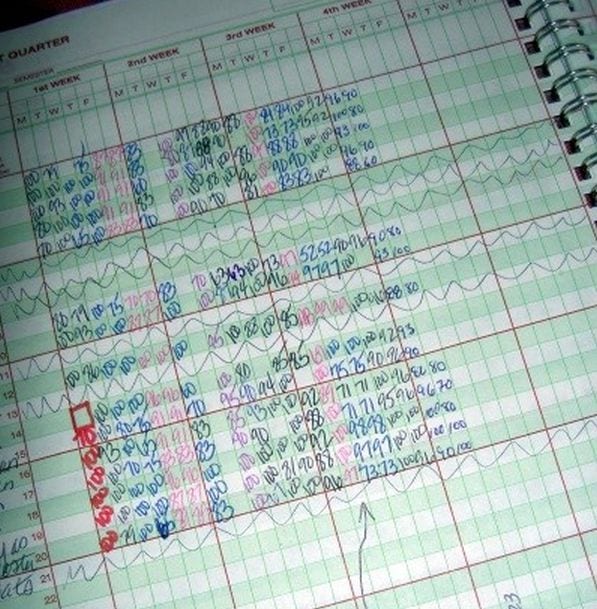
Source: Ashland University
Teachers also tracked grades by hand, writing in each test and homework score. At the end of the quarter, they added and averaged grades by hand too.
34. EZ Grader
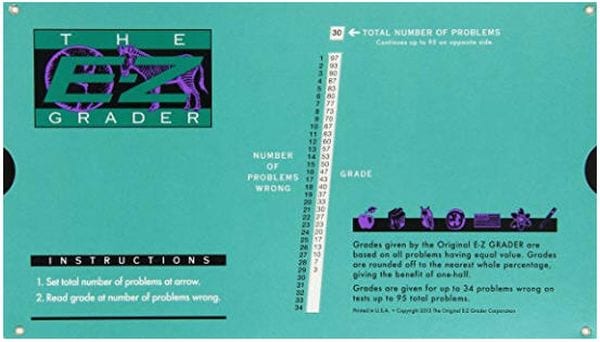
When grading papers by hand, the EZ Grader was a lifesaver. The sliding card gave you the student’s grade, based on the number of problems they got wrong. To be honest, you’ll still find these on quite a few teachers’ desks.
35. Handwritten Report Cards
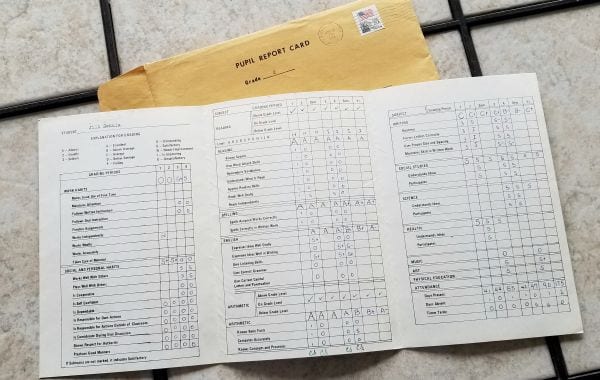
Report cards were done by hand, too. In the early days, report cards were actual cards students took home each quarter and brought back with their parent’s signature. Later report cards were often completed using the Scantron bubble sheets, which then generated computer printed sheets students would take home.
36. Fountain Pens
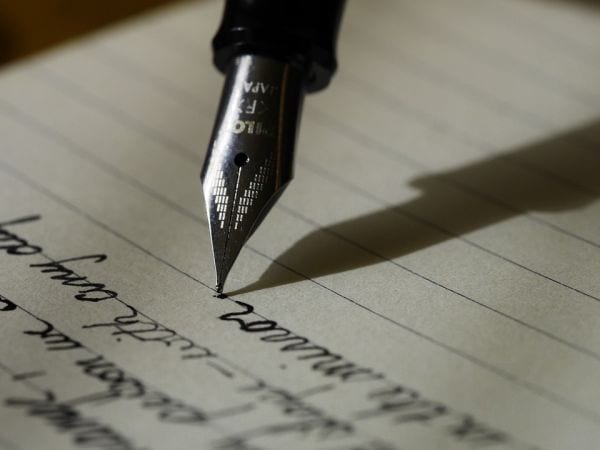
Early ballpoint pens weren’t cheap, and students used fountain pens throughout the 1960s, and even in the 1970s in some places.
37. Cursive Handwriting
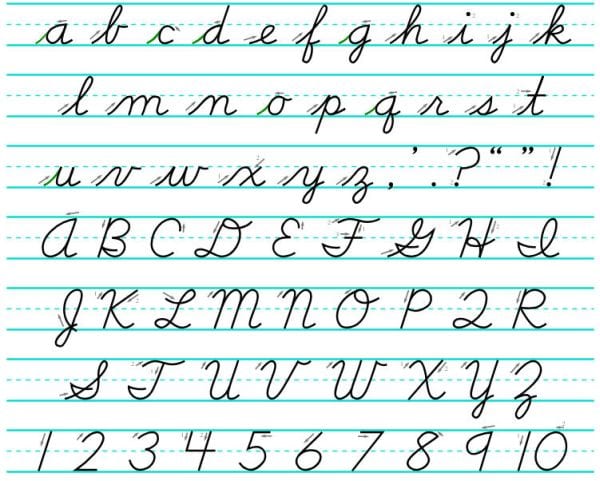
This is a topic of heavy debate these days, and many schools do still teach cursive. But we definitely don’t place the emphasis on handwriting and penmanship that we once did, for better or worse.
38. Diagramming Sentences
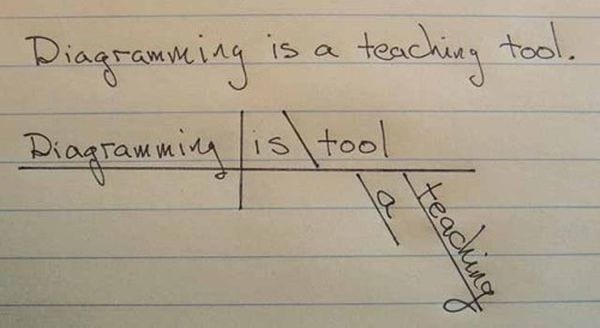
Source: Under Western Skies
This is another skill rarely taught these days. It helped students understand the parts of a sentence but could get very complicated.
39. SRA Cards
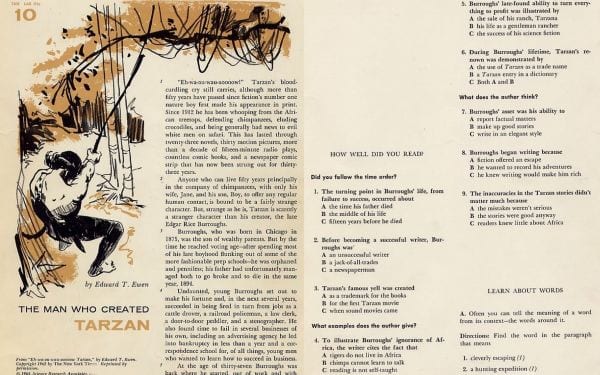
Source: Hack Education
This self-directed-reading program was a series of cards students could complete at their own pace. They had answer keys so students could correct their own work, and kids were responsible for keeping track of and recording their progress. Obviously, this sometimes worked well—and sometimes it didn’t.
40. Califone Cardmasters
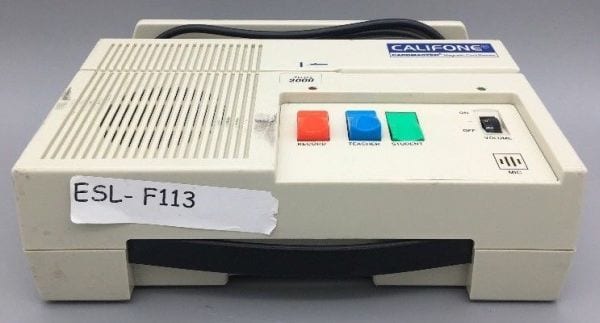
This machine used magnetic cards to record a short bit of audio, often a teacher pronouncing a word or phrase. Students played the audio, then pressed record and repeated the word or phrase. They could then play the whole card to compare the two. These were used a lot for speech therapy and ESL learners.
41. Cutting and Pasting
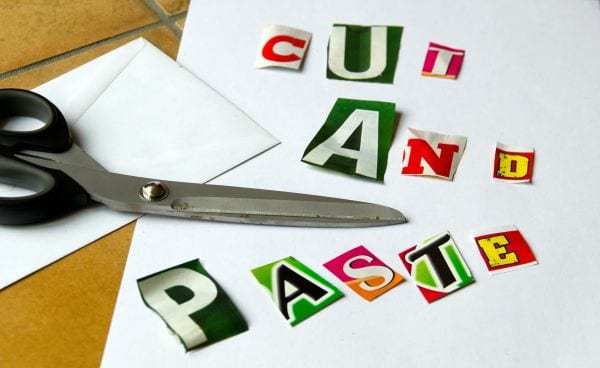
Before computers, teachers did a lot of actual cutting and pasting. They cut out and pasted items to make their own handouts and worksheets, which could then be run through a copier (once those arrived).
42. School Paste
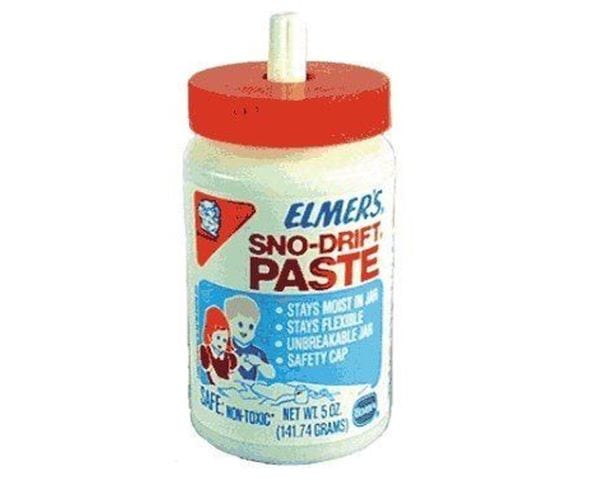
Speaking of paste, glue sticks haven’t been around forever, you know. Students and teachers used to use school paste by dipping a stick into the pot and spreading it around. This paste had a pleasant minty smell, so teachers had at least one or two paste-eaters in every class.
43. Cutting Letters by Hand

Source: Miss Giraffe’s Class
Before die cut machines, like Cricuts and Silhouettes, teachers cut letters for their bulletin boards by hand. They traced or drew them freestyle and cut them out one by one. To make them last longer, teachers sometimes laminated them by hand between sheets of clear contact paper.
44. Milk Breaks
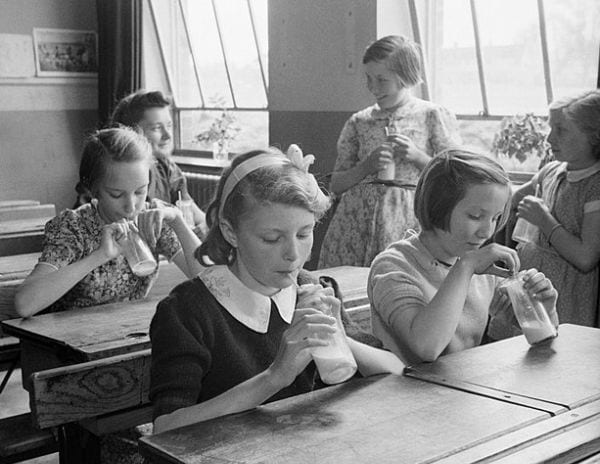
Some schools still do morning milk breaks, but they used to be common nationwide.
45. Collecting Milk and Lunch Money
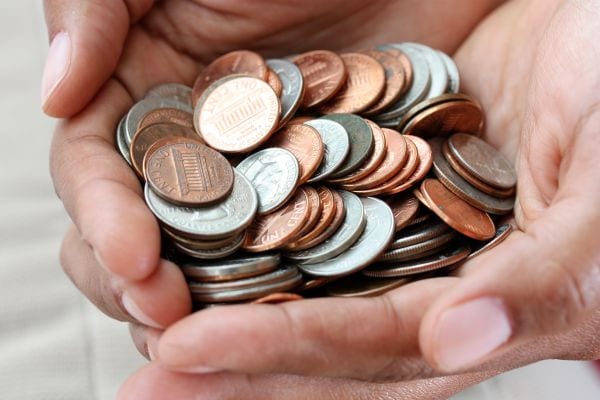
Source: Adobe Stock Photos
At the beginning of each day, teachers would collect milk money and lunch money (there was usually only one option for lunch) and send it to the office along with a count of how many of each would be needed that day. Because they didn’t already have enough to do.
46. Teacher Mailboxes
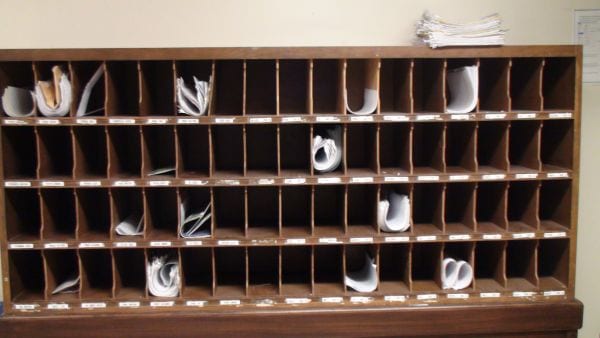
In the days before email, teachers needed to check their mailboxes at least once, and often more, every single day—no matter how far their classroom was from the office.
47. Student Desks With Storage
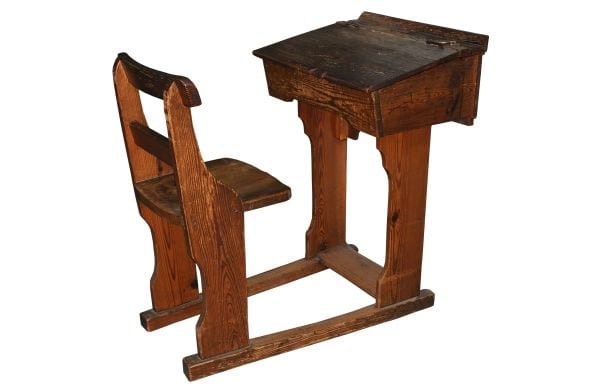
Source: Adobe Stock Photo
So many classrooms use tables or simple desks now, but once kids had desks with built-in storage. Of course, the things that got stored in them were often less than ideal—just ask the janitors who had to clean off chewed gum regularly.
48. Stockings and Skirts, Please
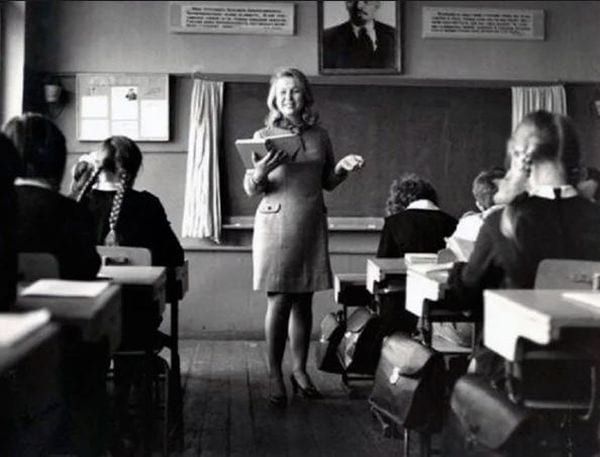
Source: Art Blog
Through the 1970s and into the 1980s, female teachers were expected to wear skirts and pantyhose every day. The option of wearing pants trickled in slowly. Even today there are some ridiculous wardrobe rules that teachers face, but most can wear casual pants now. Many even believe that teachers should be able to wear jeans every day.
49. Passing Notes
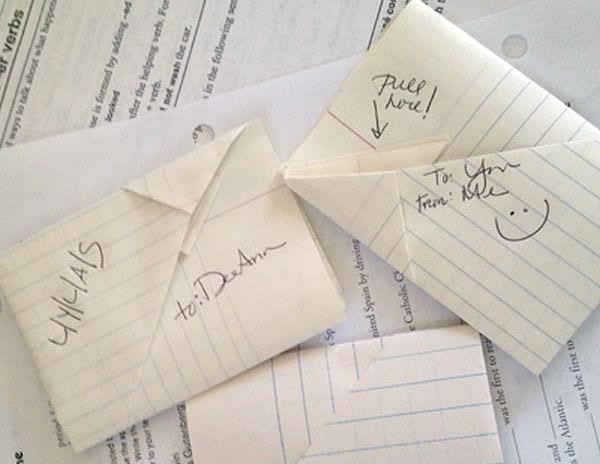
Source: Like Totally 80s
Texting is the clandestine way to communicate in the classroom these days, but once upon a time kids passed notes instead. These were often folded intricately with early text-speak abbreviations on the front (e.g., LYLAS = Love Ya Like a Sis). Teachers who intercepted a note could throw them out—or choose to read them out loud in class and watch the note passer squirm.
50. Paid in Cash
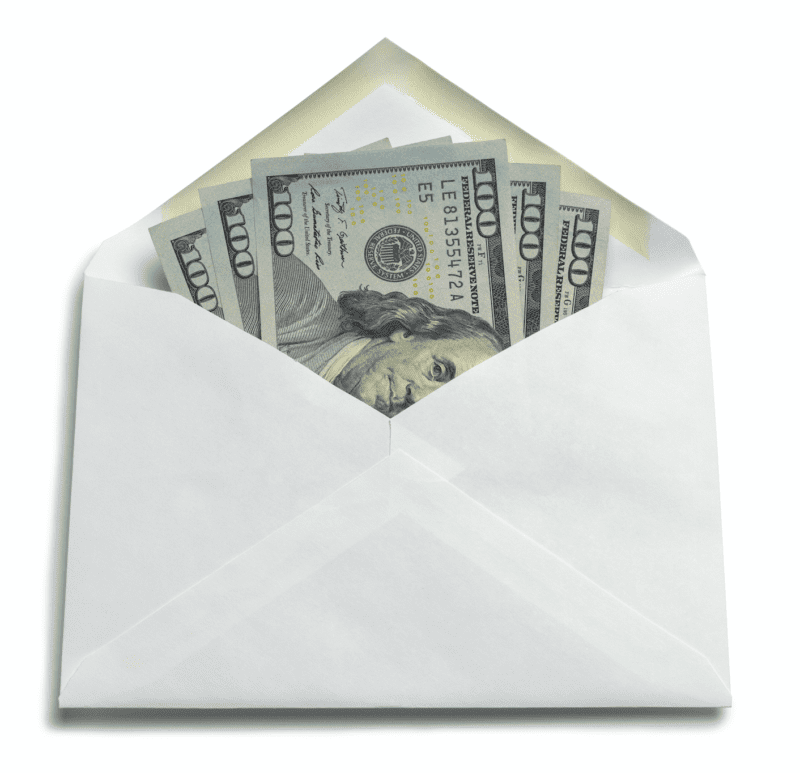
Yes, before the days of direct deposit and checks (even those are getting to be obsolete), teachers would line up and get paid in cash. Sometimes it would be in an envelope, but other teachers say the cash was just handed to them!
What are your favorite teaching memories? Come and share in our WeAreTeachers HELPLINE group on Facebook.
Plus, check out these old-school recess games.
